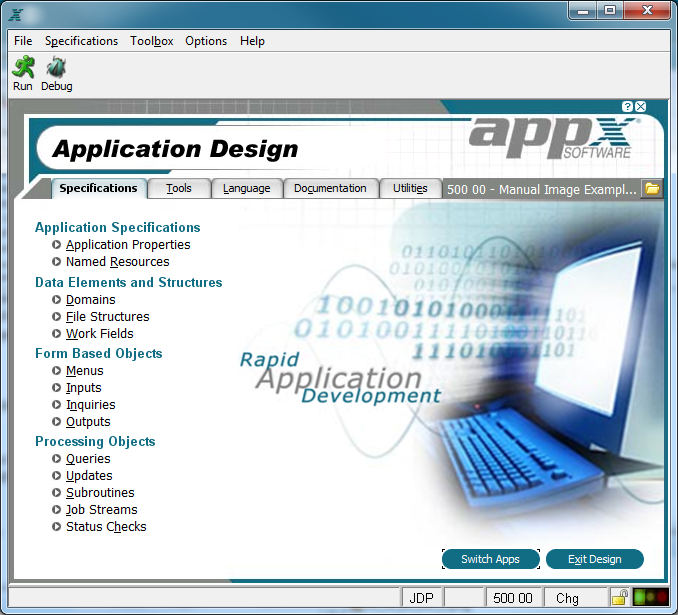Chapter 3-3: Process Definition |
Introduction to Process Definition Processes are reusable software building blocks for constructing APPX applications. You can access the nine types of processes from the Application Design Specifications Menu shown below. Processes are grouped on this menu according to whether or not they support image design. Form Based Objects include processes that invoke the Image Editor to define or edit images. Processing Objects include processes that do not involve the design of images.
Application Design Specifications Menu Form Based Objects include the following four types of processes: Menus provide an on-screen display from which to execute selected processes. For example, a screen that lists the reports available in an application and from which you select a specific report is a menu process. Refer to Menu Processes for a discussion of menu specifications. Inputs permit you to enter or maintain data in one or more files from designer-formatted screens and overlays. A sales order entry function and a customer file maintenance function are both input processes. Refer to Input Processes for additional information. Inquiries are exactly like output processes, except that they automatically print to the screen, and allow a user to select a specific record for inquiry. Refer to Inquiry Processes for more information. Outputs convey information from a database, either on the screen or in hard copy, according to a designer-defined format. Trial balances, product purchase history reports, and customer lists are all examples of output processes. See Output Processes for more information. Processing Objects include the following five types of processes: Queries determine the records that are available to a subsequent input, update, or output process, and/or establish the sort hierarchy. See Query Processes for more information. Updates alter a database by adding, deleting, and changing records in the database?s files. Refer to Update Processes for additional information. Subroutines define reusable procedural programs that can be executed from other APPX processes. A program that converts one unit of measure to another, for example, can be written as a subroutine. Refer to Subroutine Processes for more information. Job streams control the sequencing of related processes. Refer to Job Processes for more information. Status checks provide various error reporting options. Refer to Status Processes for additional information. |
Application Design Manual "Powered by Appx Software"1071 ©2006 By APPX Software, Inc. All Rights Reserved |
